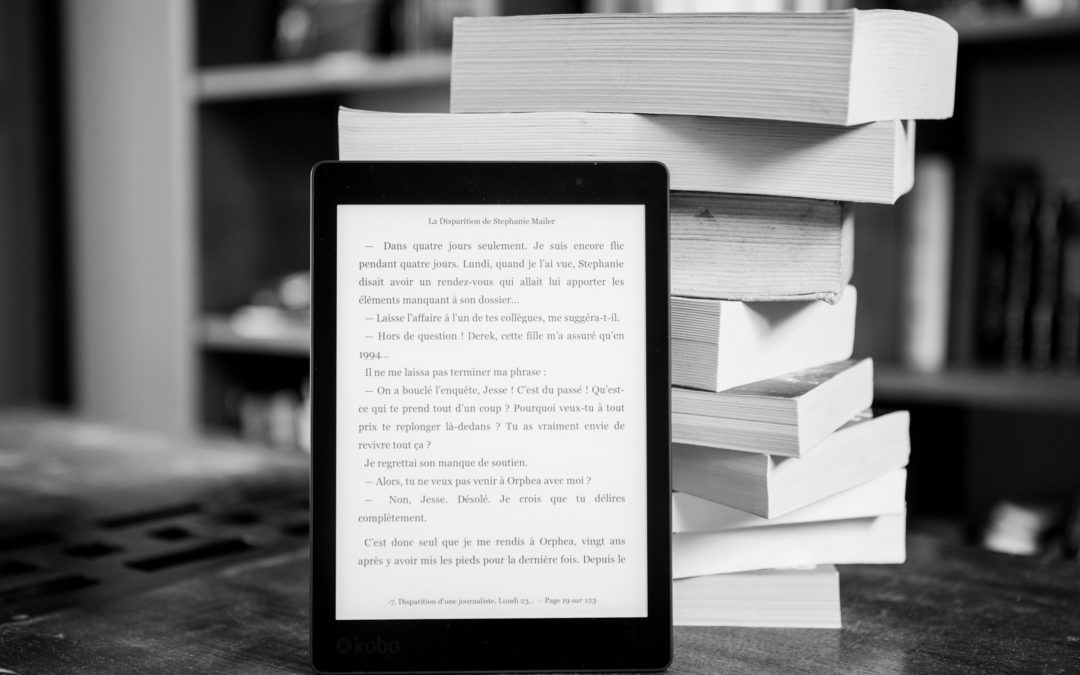
Guidelines for Writing a Memoir People want to Read
Although based on actual events, memoir is more like fiction than non-fiction. To be publishable, a memoir must make use of fiction techniques that pull the reader along and elicit an emotional response. A good memoir begins with the author’s perspective but doesn’t end there. It leaves the reader with a decision to make or an action to take.
If you are not a celebrity, you need to be able to write extremely well in order to place a memoir with a publisher. Memoirs can be very complex pieces of work.
Memoir vs. Autobiography
First-person accounts of people’s lives are often categorised into two main genres: autobiography and memoir. An autobiography covers the trajectory of an entire life, while a memoir is just one story from that life.
An autobiography spans one’s entire life; it’s much like a ‘historical document’ and is more formal than a memoir because it strives for factual accuracy. Autobiographies often tell stories close to or exactly how they happened, which means they often feature straightforward language and chronological narration. Autobiographies usually cover multiple themes. There’s not just one life lesson learned, but many; not just one significant event covered, but several.
A memoir usually revolves around one or few significant memories; it’s rarely all-encompassing. Where autobiographies emphasise facts, memoirs focus on personal experience, intimacy and emotional truth. These most often concern a specific time, or an event, or series of events, or a choice that changed the course of a person’s life, all of which are tied together with one theme. A memoir is heavily thematic, and this overriding subject is often the moral, i.e. the lesson learned, or a significant transformation of self (e.g. finding out you’re adopted, or losing a leg to a shark attack), as examples.
The requirement for a strong autobiography is a life that’s out of the ordinary in some way, whereas a memoir can be about an ordinary existence told with profound insight; it doesn’t depend on having lived a traumatic, eventful or dramatic life.
Choose a theme
The starting point for writing memoir is to pick a theme, occasionally more than one, from your life that you feel is worth writing about. A theme is a universal idea we all grapple with, something anyone can understand; it answers the question, “What is this memoir about?” Having a theme not only helps your reader connect to your work, but also makes the writing process much easier.
What you shouldn’t do when writing a memoir is tell a bunch of stories tentatively connected in some way. A memoir is more than that. Good narrative non-fiction always connects the reader to a deeper truth. Use your theme to tie events together and include only those stories that illustrate the theme.
Narrow your focus and develop a plot line
Identify one or perhaps a few events in your life to develop the plot line, the story you tell to illustrate the theme, the ‘big universal thing’ your story is about. ‘You’, as the subject, is not what the story is about. The story is about something universal and you are its illustration.
Of course, our lives are not comprised of solitary, isolated bundles of experience. Rather, the repercussions of our life choices and events all form threads which bind together to create experience. But it is necessary to select one or a core few to focus the plot around.
According to highly regarded academic, teacher and writer William Zinsser: “My final [reducing] advice can be summed up in two words: think small. Don’t rummage around in your past — or your family’s past — to find episodes that you think are ‘important’ enough to be worthy of including in your memoir. Look for small self-contained incidents that are still vivid in your memory. If you still remember them it’s because they contain a universal truth that your readers will recognize from their own life.” [1]
Establish a story arc. The best way to accomplish that in a memoir is by showing how you, the main character, grew and changed as a person. Even though it’s a story about your life, it still has to have some of the elements and structure of fiction to make it compelling. You need character development, a compelling struggle and a resolution.
Your memoir is not all about ‘you’
Your memoir should focus more on a story than simply your own subjective experience. It should be about the lesson you’ve learned and your insights that can be share with others. Readers will become bored hearing only about you; it’s too egotistical. But don’t ram your lessons down their throat, either; be subtle.
A memoir is about something bigger than you. It’s about a part of life we can all connect to. Your story’s details are conveyed in such a way that readers can enjoy the universal elements within your own personal experience.
Don’t begin at the beginning
It’s recommended that you start your memoir from the end or at the point of highest drama. Don’t tell your story chronologically; that’s too predictable. And don’t include every detail of your life. Readers become impatient with memoirs that meander through a backstory to get to the interesting parts. Some memoirists find it helpful to start from the end of their story first. Write about how you got to where you are.
Or, begin your memoir with an incident that is powerful and makes an impact. Even if this means beginning in the middle of the story, you can retell events out of chronological order. Perhaps start with the major turning point, and cycle back to explain how you came to that point later, or simply progress from this point to the resolution.
Be honest and fair
Vanity and self-obsession can ruin your memoir. Don’t embellish try to make yourself look better or appear more interesting, or ignore your own flaws and faults, or fabricate to justify your past. Doing so makes your memoir sound biased or even self-pitying. Memoir demands that you write about what really happened and what you’ve learned. It’s about retrospection, trying to figure things out, about exploring the truth as seen through your eyes.
The value of your story is in its raw and vulnerable honesty. It’s okay to be human and it’s required when writing a memoir. Readers will sense when you’re lying anyway. Your memoir should strive for your personal emotional truths, and it should feel far more personal that an autobiography.
What to keep and what to cut
Carefully choose what to leave in your memoir and what to cut. The most important elements to keep are any concerning transformation, growth or transcendence. It’s a minimum requirement of the genre. Don’t confuse transcendence in this context with a religious or spiritual experience: it’s more about progressing, even evolving.
It is important to understand the turning points (i.e. the events which have inspired the memoir) which are significant to the story and require deep examination to succinctly convey their emotional significance.
Make your book episodic, describing in detail events that are of interest or highly poignant to your story. Cut all meaningless details and the mundane (unless it is an intrinsic part of building the scene) which have no relation to your overarching theme. What this means is that at times you may have to skip forward months or even years in your narrative to deliver only the aspects which are relevant to the wider message you want to convey to your readers. A memoir can have a short or long timespan. The events could happen in days or over a lifetime, but the focus must remain on those events and be tied to the theme.
Have a target audience
Not everyone will enjoy or be drawn to your memoir, and that’s understood. You’re not trying to reach all readers, only those who relate to or benefit from your story. Write for that target audience as if you’re speaking directly to them. Memoir readers are not interested in rambling, self-indulgent pieces. Memoir readers tend to prefer:
- A sympathetic main character
- Vividly depicted scenes
- Emotional tension
- Increasing sense of drama/conflict
- A satisfying ending
They like evocative content that provide a glimpse into someone else’s life. They want writing that enlightens them on experiences which they may not have had, and with a moral, a lesson or a message attached.
Don’t use real names
Whenever possible, use a pseudonym rather than the real name of a character in your memoir. Also avoid sharing easily identifiable information about the ‘characters’ you mention. This is the one time when it’s better to blur the truth. Using real names can get you in a lot of trouble and become a legal wrangle. You could face a defamation lawsuit even if you’re telling the truth. Just as serious, you could damage close relationships by your portrayal of them.
Editing is essential
Most of us don’t have the objectivity or, perhaps, the skill needed to strip away parts of our story to find the true turning point or the core of our truth. Even though you have distance from the events in your memoir, it’s still a part of your experience.
That’s where an editor plays a role. Because memoirs are so personal, you need a fresh, impartial perspective to help you create a stronger narrative. I can help you fine-tune your memoir ‒ developing a theme, selecting life events, learning writing technique and so forth. Contact me to discuss your project. M: +64 29 1230 158 and email: renellj@proofperfect.co.nz
Final Thoughts
Keep in mind that a memoir doesn’t necessarily need to be strictly about your own life. It can also be about a person other than the writer, or about a given place, or it can be a ‘hybrid memoir’ combining a personal story with other non-fiction subject areas; it can cross genres, too.
Renowned authors Jeanette Winterson and Helen Macdonald state that a memoir does have to ‘fit the genre’ ‒ it can cover more than one genre if the writer is skilled. Nor does a memoir have to “conform to chronological order; both [authors’] books whip sometimes furiously from past to present, in an order set by a progression of emotions and themes, not constrained by a linear idea of time”. [2]
[1] ‘How to Write a Memoir’ by William Zinsser, The American Scholar, 12 May 2015: https://theamericanscholar.org/how-to-write-a-memoir/#.XcEicDMzYT5
[2] ‘How to write a memoir: Jeanette Winterson and Helen Macdonald’, by Alex Clark and Sian Cain, The Guardian: 4 June 2015: https://www.theguardian.com/books/2015/jun/04/how-to-write-a-memoir-jeanette-winterson-and-helen-macdonald















